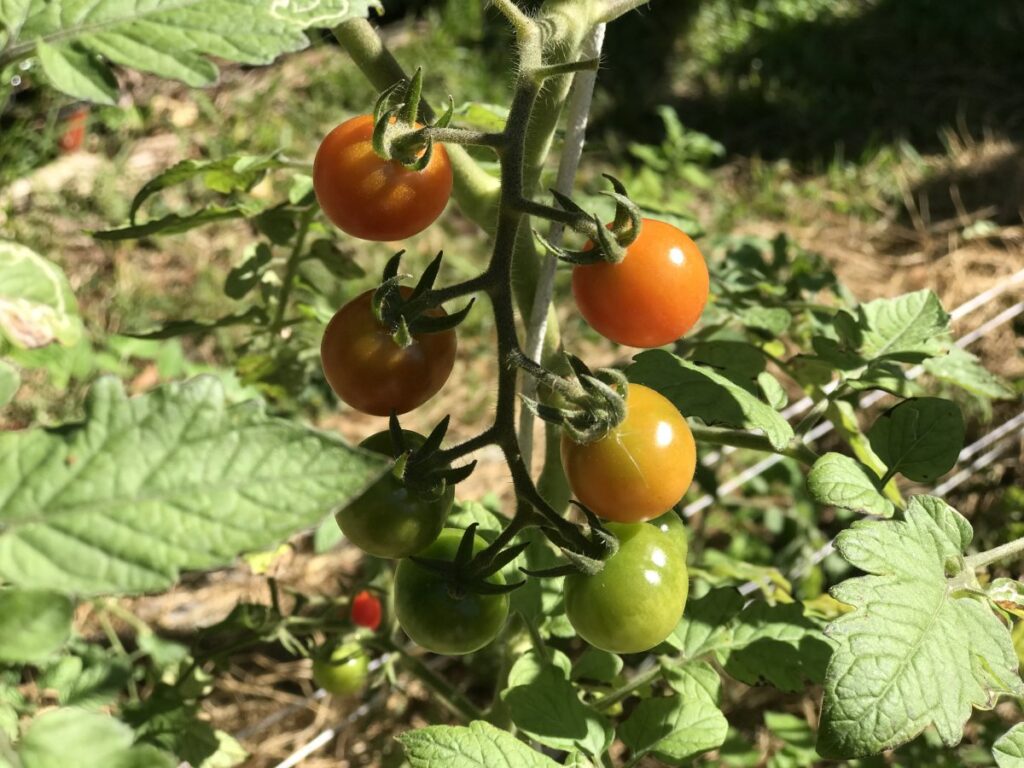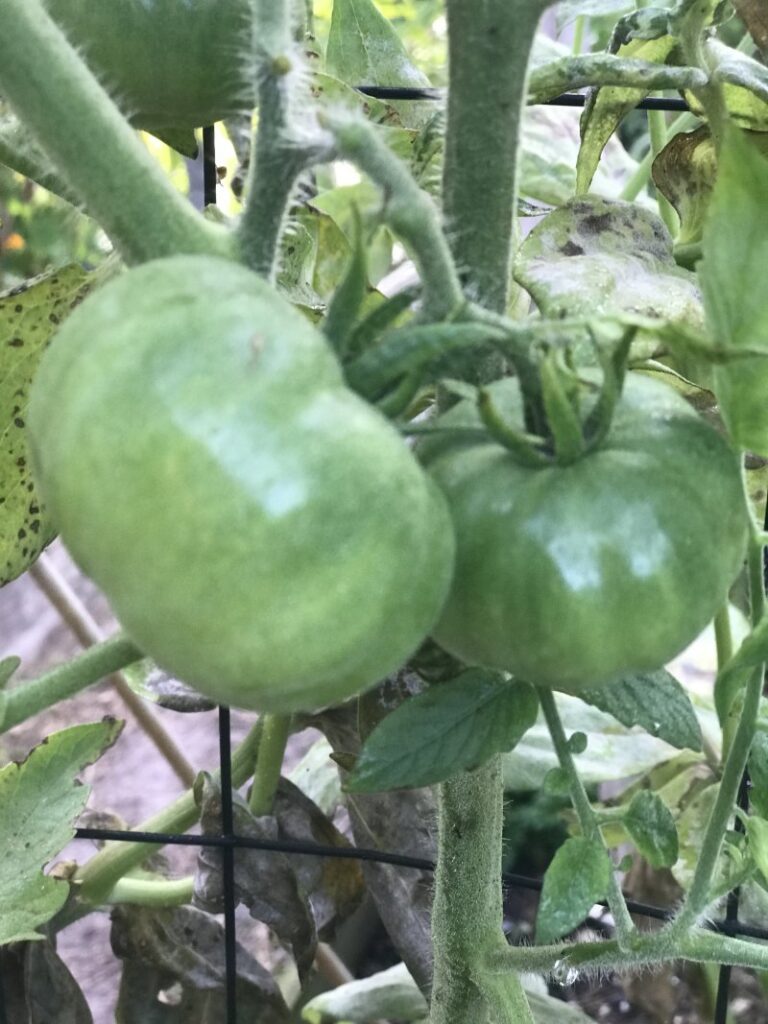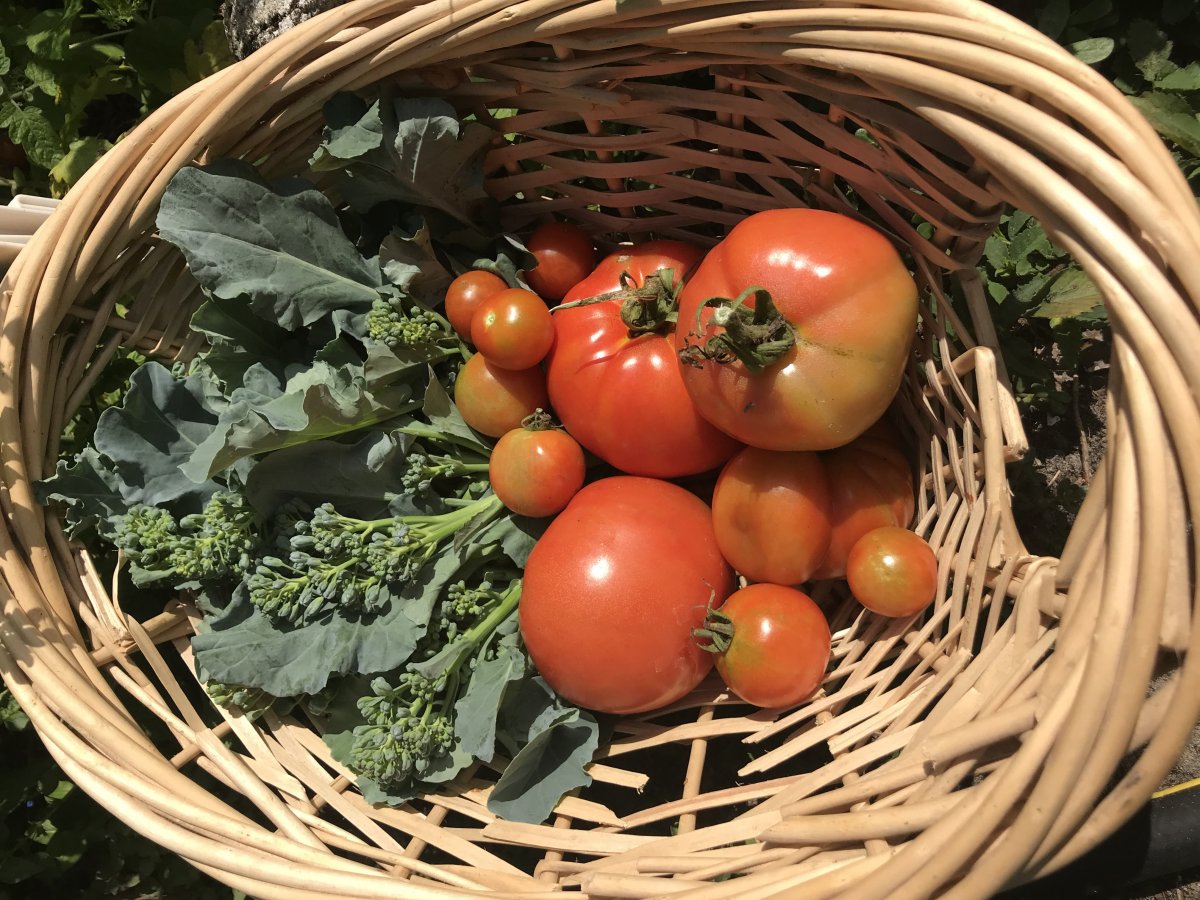With our mild winters and subtropical climate, many gardeners assume we can grow tomatoes all year round in Florida. The fact is that we can’t, but it’s not what you’d expect. Summer is a horrible time for anything but the semi-native, naturalized Everglades tomato variety. And sometimes it’s even too miserable for them.
Can you grow tomatoes in Florida in the winter? You sure can, if you approach it with some thoughtfulness. If you’ve never gardened before or you’re one of the many transplants from “up north,” it may seem like it’s hard to grow tomatoes at all in Florida.
But I remember growing up in the late 70s and hearing about the famous “Ruskin tomatoes.” They were a big deal in the Ohio suburbs, and since I was just a kid at the time, I can only speculate why. Before mass import of fresh produce became commonplace, Ruskin (Gulf Coast region, zone 9b-10a) was probably the first place to deliver fresh tomatoes in the spring in the Eastern U.S. So, obviously, you must be able to grow tomatoes in Florida in the winter, right?
If you look at some of the planting schedules published online for Florida, including our Florida Gardening Planner, you’ll note that for Central and South Florida, experts recommend starting tomato seeds for fall planting in August. My experience is that late July or any time in August is fine, and they’ll be ready for planting out in mid to late September.
This last year (2021) remained pretty hot and muggy well into October, so I felt comfortable planting out the remaining starter plants that month. In Central Florida, it currently stays pretty warm and mild throughout December, and we normally don’t get any real lows until January. That said, it’s pretty usual to have healthy, full-grown, and still-producing tomato plants on New Year’s Day.
But what about those cold snaps? How do you ensure that your tomatoes make it through the night? What’s the best way to grow tomatoes in the winter in Florida? How do you manage winter gardening in Florida when it’s impossible to predict the next cold snap?

Plan Early for Winter Growing
Getting your tomato seeds started in time is key to growing tomatoes over the winter in Florida. For zones 9 and 10, that means having starter plants ready to establish in the garden well before any temperature drops. Tomatoes should have at least 8 to 12 weeks in their final homes before cold nights hit to develop strong and healthy root systems.
Plant for Optimal Sun Exposure
Placement is also key to growing tomatoes in a Florida winter. Just because it’s 80 degrees doesn’t mean the days are any longer. Plant your tomatoes with southern exposure, ensuring they receive as much full sun as possible. You may have to water them more frequently but setting them up for success with plenty of sunlight will create more resilient plants.
This isn’t a technique recommended for growing tomatoes in the spring, when a little protection from the midday sun may be beneficial. For winter tomatoes, full sun is required.
Protect Against the Elements
Depending on where you live in Florida, winter winds can cause havoc. Coastal areas are particularly beaten by high winds. Plant your tomatoes where buildings or larger shrubs or trees can protect them from harsh gusts.
Reflect on This
A south-facing wall can help collect heat and reflect warmth back onto your plants during the night. So, whether you grow in containers or garden beds, take advantage of any light-colored walls that can help keep your tomato plants toasty warm.
Mindfulness
Paying attention to the weather forecast is a must for gardeners in any location. Take note of the forecast so you can prepare. The good news is that even when it drops below 50 degrees, or even 40 degrees, it rarely drops that low for long enough to completely kill your tomato plants.
Tomatoes don’t produce well with temperatures below 50 degrees F, but they can survive down to freezing temperatures. A short blast of cold can damage leaves and stunt growth, and extensive frost can kill your plants, whether it’s 40 degrees or 30. But you can provide protection overnight to give them their best chance.
Prepping your Tomatoes for Cold Snaps
Part of planning ahead for winter gardening in Florida includes planting your tomatoes where they can be easily covered. This may be in containers that can be moved, in a greenhouse or polytunnel, or even against a trellis or arbor that offers support for frost covers.
Another key factor when planning ahead is choosing the right tomato variety for winter growing. Tomatoes are either determinate or indeterminate. Determinate tomatoes only grow to a specified height — about 3 to 4 feet. Indeterminate varieties continue to grow and vine up to 6, 8, even 10 feet long. Covering a relatively short tomato plant for a cold snap is infinitely easier than a tall, vining variety. So, if you’re planning on growing your winter tomatoes outdoors rather than in a greenhouse or tunnel, you may want to stick to the determinate varieties.

Improving Resilience
Another way to help your tomatoes make it through cold spells is to ensure that it’s as healthy a plant as possible. A healthy tomato plant is far more likely to recover from any cold damage.
Watering
You may have noticed the specific weather pattern that often precedes a cold snap in Florida — a heavy rainfall. Winter and spring are some of our drier months in Central Florida, but we frequently get a good rainfall before a cold front hits. Take this as a clue from nature. Make sure to water your tomato plants deeply the day before the cold snap. Water keeps the individual cells of the foliage plump and strong, while moist soil stays warmer than dry soil.
In the case of tomatoes, it’s still a good idea to avoid getting the foliage wet, so water the ground, not the leaves.
Covering
There are a number of commercial products you can buy to cover your tomato plants during a cold snap, from lightweight fleece sheets to insulating blankets. In warmer areas of Florida, an old sheet or blanket will do. We’ve also repurposed a number of old beach towels. If you don’t have any leftover bedding, check your local thrift store and save yourself a small fortune.
Many is the time we’ve had an “all hands on deck” to dig through linen chests and closets to find old sheets. The whole family works together to cover the tomato plants, and it’s funny to see the old kids’ cartoon character sheets flapping in the breeze.
Sometimes it’s not hoarding, it’s being prepared.
All fabric covering should be dry before covering the plant. Drape the plant as completely as possible, from the top to the ground, ensuring the edge touches the ground and is well anchored to keep in the heat. Make sure that no branches will carry more weight than they can manage.
Don’t use plastic unless you can guarantee it will never touch the leaves. Frankly, it may not be worth using at all unless, of course, you have a polytunnel.
After Care
Helping your tomato plants recover from a cold snap is just as important as preparing for it. Make sure you remove any covering as soon as you can after the sunrise. If condensation has collected on the covers, you should remove them ASAP.
With our wacky winter temperature swings, it’s not impossible that the day after a cold dip will get up into the 80s and be blazing hot and dry. Check your weather forecast, and if it looks like you’re in for one of those days, you should go ahead and water your tomatoes again to help them recover from the stress.
Observe your tomato plants over the next few days. You may see some cold damage on the tips of the leaves. These can be trimmed off, but I normally leave them as they are.
If you have any casualties, you can remove any unripened fruits and place them on a warm kitchen counter. They should continue to ripen and be quite edible in a few days. (You can also do this before the cold snap hits if you have time.) Compost the remaining vegetation.
Your Own Resilience
Gardening isn’t just a production line, it’s a process. It’s a way of nurturing yourself by growing healthy food for yourself. It’s a way to connect with your land and interact with the (somewhat) natural world. Don’t be too hard on yourself if your winter tomatoes don’t make it. Winter gardening in Florida can be very rewarding, but there are risks.
Cultivate your own resilience by accepting gardening losses with a big dose of humor and by working for more diversity in your garden, rather than “results.”
And, after all, it’s time to sow your spring tomato starts. So, it won’t be long until you have a whole new collection of tomato plants to fuss over.
